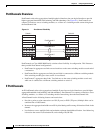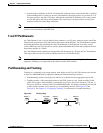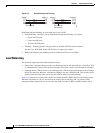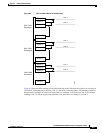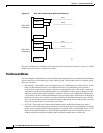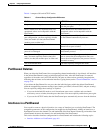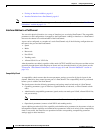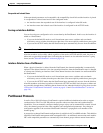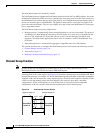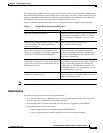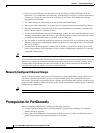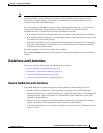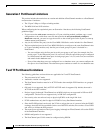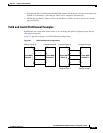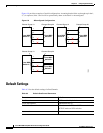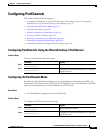
6-10
Cisco MDS 9000 Family NX-OS Interfaces Configuration Guide
OL-29284-01, Release 6.x
Chapter 6 Configuring PortChannels
Information About PortChannels
The PortChannel protocol is enabled by default.
The PortChannel protocol expands the PortChannel functional model in Cisco MDS switches. It uses the
exchange peer parameters (EPP) services to communicate across peer ports in an ISL. Each switch uses
the information received from the peer ports along with its local configuration and operational values to
decide if it should be part of a PortChannel. The protocol ensures that a set of ports are eligible to be
part of the same PortChannel. They are only eligible to be part of the same PortChannel if all the ports
have a compatible partner.
The PortChannel protocol uses two subprotocols:
• Bringup protocol—Automatically detects misconfigurations so you can correct them. This protocol
synchronizes the PortChannel at both ends so that all frames for a given flow (as identified by the
source FC ID, destination FC ID and OX_ID) are carried over the same physical link in both
directions. This helps make applications such as write acceleration, work for PortChannels over
FCIP links.
• Autocreation protocol—Automatically aggregates compatible ports into a PortChannel.
This section describes how to configure the PortChannel protocol and includes the following sections:
• Channel Group Creation, page 6-10
• Autocreation, page 6-11
• Manually Configured Channel Groups, page 6-12
Channel Group Creation
Note Channel groups are not supported on internal ports in the Cisco Fabric Switch for HP c-Class
BladeSystem and the Cisco Fabric Switch for IBM BladeSystem.
Assuming link A1-B1 comes up first (see Figure 6-6), that link is operational as an individual link.When
the next link comes up, for example, A2-B2, the PortChannel protocol identifies if this link is compatible
with link A1-B1 and automatically creates channel groups 10 and 20 in the respective switches. If link
A3-B3 can join the channel groups (the PortChannels), the respective ports have compatible
configurations. If link A4-B4 operates as an individual link, it is because of the incompatible
configuration of the two end ports with the other member ports in this channel group.
Figure 6-6 Autocreating Channel Groups
1
po10 po20
2
3
4
1
2
3
4
Cisco MDS
Switch A
Cisco MDS
Switch B
Channel Group 10 Channel Group 20
120489



